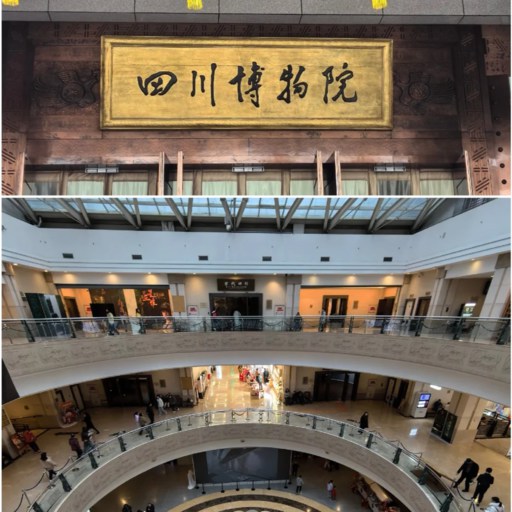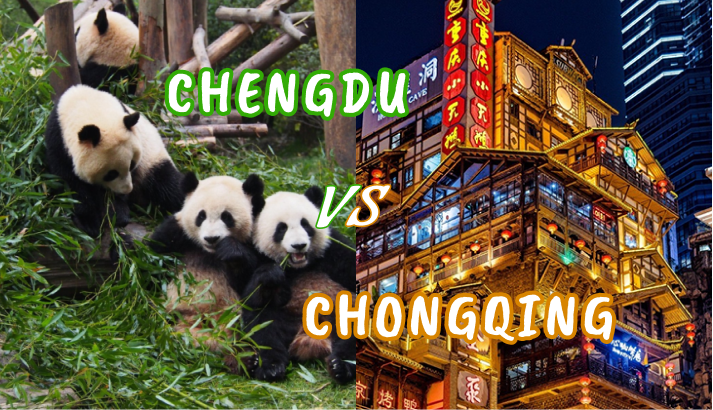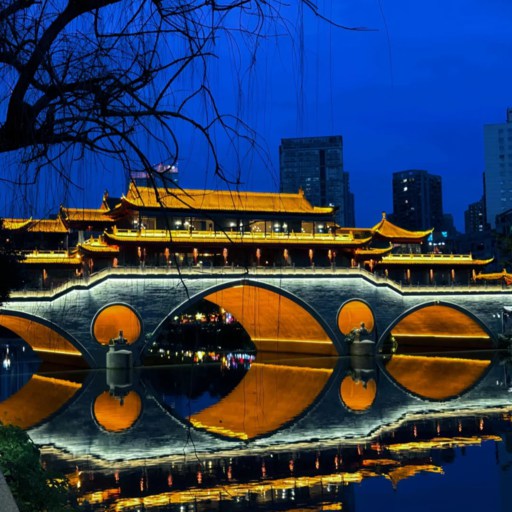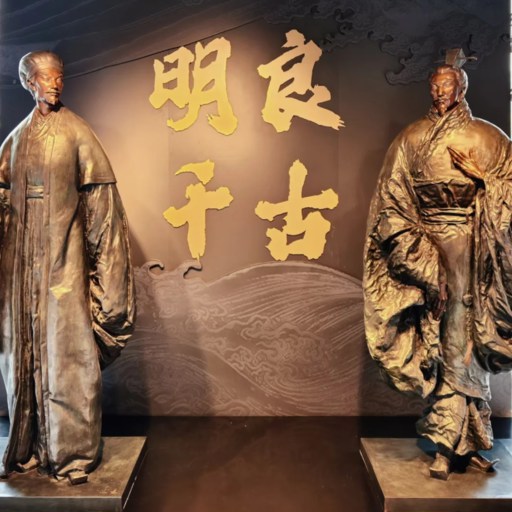
Sculptures in Wuhou Shrine
When you’re mapping out your China itinerary and Chengdu pops up, is your list only pandas and spicy hotpot? We get it—those are iconic! But what if we told you this city hides 2,300 years of history that most travelers miss? Unlike Beijing’s crowded palaces or Xi’an’s jam-packed Terracotta Army, Chengdu historical sites let you soak up authentic stories without fighting hordes.
Ready to skip the tourist clichés? This guide zeroes in on nine must-visit Chengdu historical sites, grouped by the eras that shaped the city—from mysterious ancient Shu civilization to Three Kingdoms heroics, poetic retreats, traditional streets, and engineering marvels. And we’re not just listing spots: we’ve packed in insider itineraries to save you time, local dining hacks so you eat like a local, and tricks to avoid tourist traps. Want to turn your Chengdu trip into a deep dive into China’s hidden past? Let’s start.
Ancient Shu Civilization: Bronze Age Mysteries (3000+ BC)
1. Sanxingdui Museum: The "Alien Masks" That Shocked Archaeologists
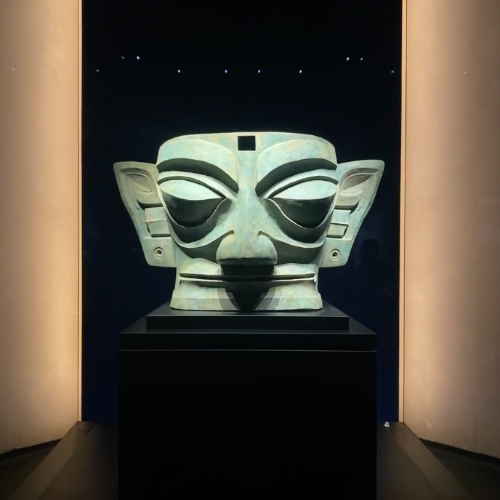
Sanxingdui Bronze Masks
QUICK INFO of Sanxingdui Museum
🏛️ Type: Archaeological Museum
📍 Address: Sanxingdui Town, Guanghan City (1 hour north of Chengdu)
💰 Price: ¥72 (Includes both museum halls)
⏰ Hours: 8:30 AM - 6:00 PM (Last entry 5:00 PM)
🚌 Transport: Tourist bus from Chengdu Xinnanmen Bus Station (¥28)
⚠️ Tips: Book guide in advance (English available); Bronze masks can't be photographed with flash
If Jinsha is intriguing, Sanxingdui is straight-up mind-bending. This site features bronze masks so bizarre that when archaeologists discovered them in 1986, some half-jokingly wondered if ancient aliens had visited Sichuan. We're talking faces with eyes bulging 16 centimeters out, massive ears, and expressions from serene to terrifying. Nobody knows why ancient Shu people made these, what happened to this civilization, or why their bronze techniques were so advanced yet left zero written records.
Archaeologists believe Sanxingdui survivors relocated to modern-day Chengdu and established Jinsha—same cultural DNA, new location, continued mystery. The 1.72-meter bronze standing figure in Hall Two is genuinely mesmerizing: King? Priest? God? We'll never know, and that uncertainty makes it infinitely more fascinating than any museum label could explain.
2. Jinsha Site Museum: Where Construction Workers Discovered a Lost Kingdom
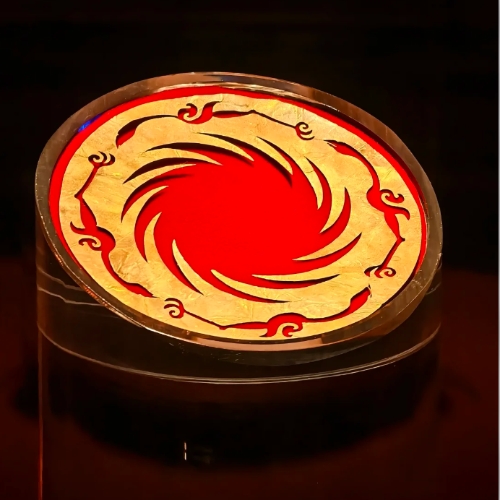
Golden Sun Bird Ornament
QUICK INFO of Jinsha Site Museum
🏛️ Type: Archaeological Site Museum
📍 Address: No. 2 Jinsha Site Road, Qingyang District (金沙遗址路2号)
💰 Price: ¥70 (Free for children under 1.2m)
⏰ Hours: 8:00 AM - 6:00 PM (Last entry 5:00 PM)
🚇 Metro: Line 7, Jinsha Site Museum Station
⚠️ Tips: No flash photography in exhibition halls; Plan 2-3 hours minimum
Picture this: February 2001, construction workers digging foundations in west Chengdu suddenly hit gold—literally. What they discovered forced a complete rewrite of Chinese history textbooks. The star artifact? A paper-thin golden Sun Bird ornament, just 20cm wide, featuring four divine birds circling a radiant sun in designs so intricate modern jewelers can barely replicate it. This 3,000-year-old masterpiece is now Chengdu's city symbol—you'll spot it everywhere from manhole covers to metro logos.
Here's the insider tip: skip the crowded Exhibition Hall One and head straight to the Ruins Hall, where the actual excavation site sits preserved under a massive glass dome—layers of artifacts still partially buried, raw history in progress. The garden outside offers a surreal moment: watch elderly locals do tai chi under the same sun ancient Shu people worshipped 3,000 years ago. That's Chengdu—millennia of history casually coexisting with daily life.
Three Kingdoms Legacy: Heroes and Historic Lanes
3. Jinli Ancient Street: Touristy But Legitimately Delicious After Dark
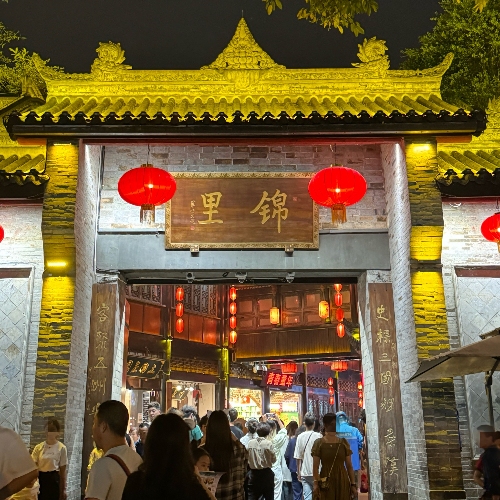
Jinli Alley
QUICK INFO of Jinli Ancient Street
🏮 Type: Reconstructed Ancient Street / Food Street
📍 Address: Wuhou Shrine Street, Wuhou District (next to Wuhou Shrine)
💰 Price: Free entry (Pay for food and souvenirs)
⏰ Hours: 24 hours (Best after 6:00 PM when lanterns light up)
🚇 Metro: Line 3, Gaoshengqiao Station
⚠️ Tips: Avoid restaurants with English menus; Queue at stalls where locals eat; Evening visit is magical
Right next door to Wuhou Shrine, Jinli Ancient Street perfectly embodies Chengd's "reconstructed but charming" balancing act. Yes, it's touristy. But here's the thing: it's genuinely fun, especially at night, and the street food situation is legitimately excellent if you know where to look. When night falls and hundreds of red lanterns light up, the whole street transforms—shadows dancing on wooden lattice windows, the aroma of Sichuan snacks filling the air, traditional instrument music floating through the lanes.
Critical lesson: avoid stalls with English menus catering to tourists. Instead, look for stalls where locals are actually queuing—if the line is full of Chengdu locals chatting in Sichuan dialect, that's where the good stuff is. My top picks? San Da Pao (glutinous rice dessert with brown sugar), Ye'er Ba (rice parcels wrapped in leaves), and real dan dan noodles that will make your mouth numb and dance—exactly how they should taste. Want to stroll through history with a skewer in hand? Don’t miss Discover Jinli Ancient Street: Your Ultimate Guide to Chengdu’s Pedestrian Paradise.
4. Wuhou Shrine: China's Only Temple Where Emperor and Minister Share Honor
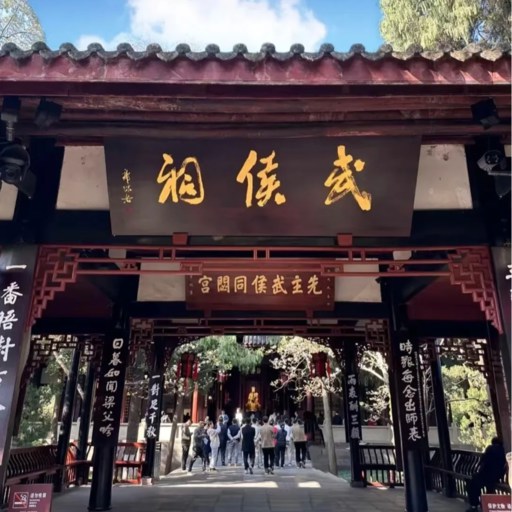
Wuhou Shrine
QUICK INFO of Wuhou Shrine
🏛️ Type: Memorial Temple Complex
📍 Address: No. 231 Wuhou Shrine Street, Wuhou District (武侯祠大街231号)
💰 Price: ¥50 (Free for seniors 60+, children under 1.2m)
⏰ Hours: 8:00 AM - 8:00 PM (May-Oct), 8:00 AM - 6:00 PM (Nov-Apr)
🚇 Metro: Line 3, Gaoshengqiao Station
⚠️ Tips: Arrive 7:30-8:30 AM for best light and fewer crowds; Rear garden is the hidden gem
Full disclosure: I visited Wuhou Shrine twice. First time? Snapped photos of those famous red walls, posted to Instagram, and left after 45 minutes. Second time I actually paid attention and realized this shrine honors Zhuge Liang, the brilliant Three Kingdoms strategist, in a way unique in all of China—it's the only place where a minister and his emperor are worshipped together. The architecture tells a story of loyalty transcending typical ruler-subject dynamics in hierarchy-obsessed feudal society.
The real secret: everyone photographs that Instagram wall and leaves. Walk past the main halls into the rear garden instead, and you'll find a peaceful bamboo grove with zero crowds where you can actually hear birds and contemplate 1,800 years of history. Pro tip: arrive at 7:30-8:30 AM when morning light hits the red walls perfectly and before tour groups arrive. If ancient heroes and quiet courtyards call to you, visit Wuhou Shrine Chengdu: The Timeless Legacy of the Three Kingdoms and feel time stand still.
Poetry, Prayer, and Cultural Heritage
5. Wenshu Monastery: Living Buddhism Where Monks and Tourists Coexist
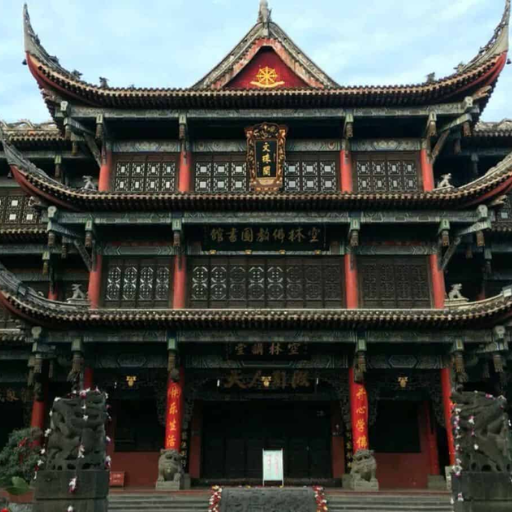
Wenshu Yuan Monastery
QUICK INFO of Wenshu Monastery
🏛️ Type: Active Buddhist Temple
📍 Address: No. 15 Wenshu Monastery Street, Qingyang District (文殊院街15号)
💰 Price: ¥5 (Basically free; Incense available for purchase)
⏰ Hours: 8:00 AM - 5:00 PM (Temple opens 6:00 AM for worshippers)
🚇 Metro: Line
Wenshu Monastery is Chengdu's largest and best-preserved Buddhist temple, but what makes it special is how it functions as both tourist site and active religious space. Built during the Tang Dynasty, it houses over 500 Buddhist statues and an impressive collection of calligraphy and paintings. The architecture is stunning—classic Tang Dynasty style with red walls, golden roofs, and intricate wooden carvings—but the real magic happens in the moments between official attractions.
Watch devoted worshippers lighting incense, monks going about their daily routines, and locals gathering at the monastery's famous teahouse (seriously one of Chengdu's best tea spots—try the bamboo leaf green tea while watching old men play mahjong). This isn't a museum; it's a living, breathing spiritual center that happens to be 1,300 years old. Visit around 7-8 AM if you want to see morning prayers and avoid crowds. From temple bells to tea aromas, history flows here—explore Explore Chengdu’s Wenshu Monastery: Where Buddhism Meets Tea and Timeless Serenity and travel through time.
6. Du Fu Thatched Cottage: China's Shakespeare Lived in This Humble Garden
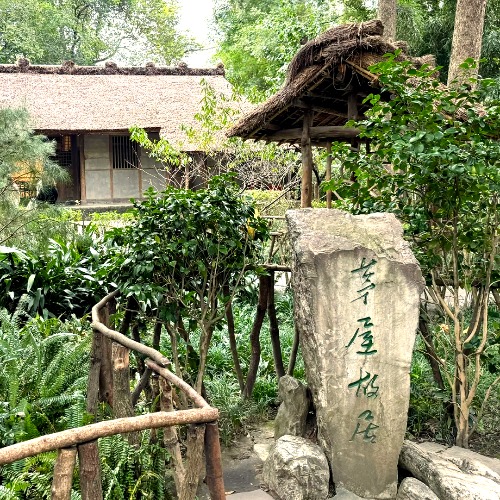
Du Fu Thatched Cottage
QUICK INFO of Du Fu Thatched Cottage
🏛️ Type: Historic Garden / Poetry Museum
📍 Address: No. 37 Qinghua Road, Qingyang District (青华路37号)
💰 Price: ¥50 (Free for children under 1.2m, students ¥25 with ID)
⏰ Hours: 8:00 AM - 6:00 PM (May-Oct), 8:00 AM - 5:30 PM (Nov-Apr)
🚇 Metro: Line 4, Caotang North Road Station
⚠️ Tips: Best before 9 AM or after 4 PM for peace; Bring poetry book to read in garden
Du Fu, often called China's Shakespeare, lived here during the 8th century Tang Dynasty, writing over 240 poems during his four-year stay. What's remarkable is how the cottage recreates the humble simplicity of a struggling poet's life, not some grand estate. The thatched-roof architecture and surrounding gardens feel authentic—bamboo groves, winding streams, and peaceful pavilions that make you understand why Du Fu found inspiration here despite his poverty.
The best way to experience it? Go slow. Most tourists rush through in 45 minutes, but this place rewards contemplation. Find a quiet corner, sit on a stone bench, and just listen—bamboo rustling, birds singing, maybe distant traditional music. Early morning (before 9 AM) or late afternoon offers the most peaceful atmosphere and best light for photography.
Traditional Streets and Modern Museums
7. Kuanzhai Alley: Hutongs with Sichuan Personality
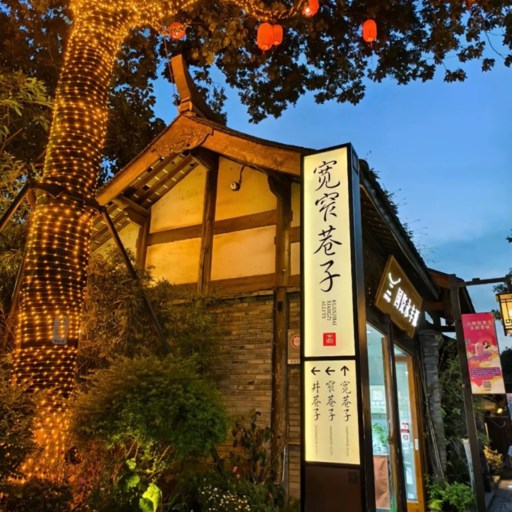
Kuanzhai Alley
QUICK INFO of Kuanzhai Alley
🏘️ Type: Historic Street Quarter (Reconstructed)
📍 Address: Kuanzhai Alley, Qingyang District (宽窄巷子)
💰 Price: Free entry (Pay for food, drinks, shopping)
⏰ Hours: 24 hours (Best 10:00 AM - 10:00 PM)
🚇 Metro: Line 4, Kuanzhai Alley Station
⚠️ Tips: Avoid main street restaurants; Explore side alleys; Visit both day and night for different vibes
Kuanzhai Alley (Wide and Narrow Alleys) is Chengdu's answer to Beijing's hutongs—traditional courtyard architecture reimagined for modern tourism. Yes, it's reconstructed (early 2000s), but unlike many sanitized "ancient streets," Kuanzhai maintains genuine charm. The three parallel alleys each have distinct personalities: Wide Alley is upscale restaurants and bars, Narrow Alley is traditional culture and crafts, and Well Alley is hipster cafes and boutiques.
The secret to enjoying Kuanzhai? Visit twice—once during the day to explore shops and architecture, once at night when the atmosphere transforms with lanterns and live music. Skip the overpriced tourist restaurants on Wide Alley and duck into side streets for authentic local joints at half the price. My favorite time is late afternoon around 4-5 PM when tour groups leave but evening energy hasn't started yet.
8. Sichuan Museum in Chengdu – Old Bronze, Quiet Halls, and Real Stories Behind Glass
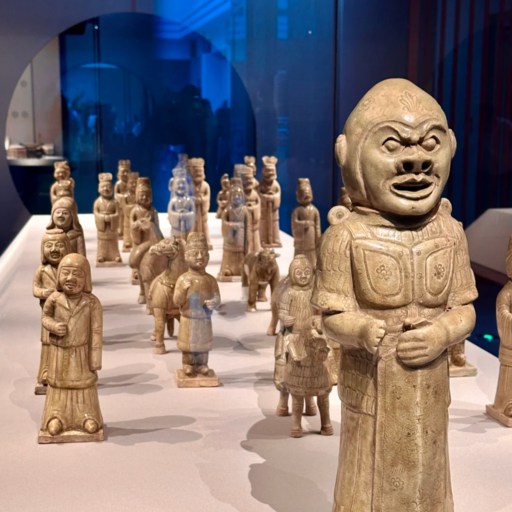
Exhibits in Sichuan Museum
QUICK INFO of Sichuan Museum
🏛️ Type: Provincial Museum
📍 Address: No. 251 Huanhua South Road, Qingyang District, Chengdu
💰 Price: FREE (ID or passport required)
⏰ Hours: 9:00 AM – 5:00 PM, Tue–Sun (Closed Mondays)
🚇 Metro: Line 2, Culture Park Station (Exit B)
Sichuan Museum sits beside Huanhuaxi Park, surrounded by bamboo and quiet air—very Chengdu in spirit. Covering over 12,900 square meters, it holds more than 260,000 relics, from ancient Ba-Shu bronzes to modern Sichuan paintings. The three floors include must-sees like the Han Dynasty pottery hall, Zhang Daqian Art Center, and Tibetan Buddhist Art Gallery. Every corner feels personal, more like stepping into Sichuan’s memory than its display case.
Visitors often describe the atmosphere as peaceful, reflective, and deeply human. Locals come here not for novelty but for calm—a break from Chengdu’s rush. Don’t miss the Ba-Shu Bronze Hall, where ritual vessels and animal-shaped masks bridge Sanxingdui and Jinsha cultures. Or the Zhang Daqian Gallery, glowing with ink and mist, a favorite among art lovers.
For a fuller picture of Chengdu’s past and the brilliance of Sanxingdui, explore Sichuan Museum in Chengdu – Old Bronze, Quiet Halls, and Real Stories Behind Glass.
Ancient Engineering Marvel: Day Trip Worth Taking
9. Dujiangyan Irrigation System: 2,300-Year-Old Engineering Still Working Today
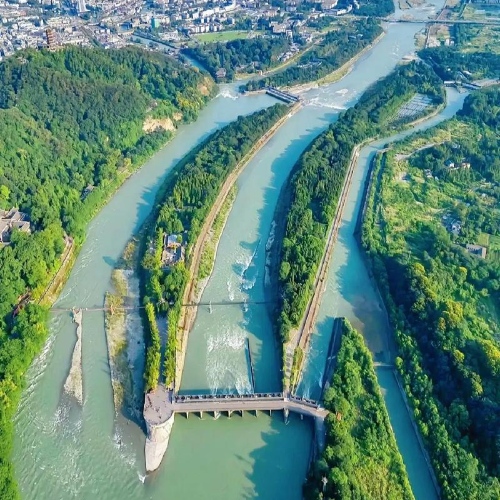
Dujiangyan Irrigation System
QUICK INFO of Dujiangyan Irrigation System
🏛️ Type: UNESCO World Heritage Site / Functioning Ancient Engineering
📍 Address: Dujiangyan City (45 mins from Chengdu)
💰 Price: ¥80 (Includes main system + Erwang Temple area)
⏰ Hours: 8:00 AM - 5:30 PM (Dec–Mar), 8:00 AM - 6:00 PM (Apr–Nov)
🚄 Transport: High-speed train from Chengdu (¥15, 30 mins) or tourist bus
⚠️ Tips: Combine with Qingcheng Mountain; Bring comfortable shoes; Morning visit recommended to avoid heat
Dujiangyan isn't just another historical site—it's a functioning 2,300-year-old irrigation system still controlling the Minjiang River and watering Sichuan's farmland today. Built in 256 BC without any cement or modern technology, it uses natural river flow and gravity to distribute water, prevent flooding, and enable year-round agriculture. This engineering masterpiece earned Sichuan the nickname "Land of Abundance" and is why Chengdu developed into a major city.
What makes visiting special? You can walk across the ancient weir and suspension bridge, watching massive volumes of water being diverted exactly as designed over two millennia ago. The Erwang Temple on the mountainside offers spectacular views of the entire system and explains the genius engineering principles. Combine it with nearby Qingcheng Mountain (Taoist holy site) for a perfect day trip—Dujiangyan morning, Qingcheng Mountain afternoon, both together show why Sichuan developed such unique culture isolated by geography yet sustained by engineering.
Practical Tips: Making the Most of Your Visit
Smart Itinerary Planning by Days
One Day Maximum: Morning: Jinsha Museum (2.5 hours) → Lunch near Kuanzhai → Afternoon: Wuhou Shrine + Jinli (3 hours) → Evening: Stay at Jinli for lantern lighting
Three Days Ideal: Day 1: Ancient Shu sites (Jinsha + Sanxingdui day trip) Day 2: Three Kingdoms culture (Wuhou + Jinli) → Poetry & prayer (Du Fu + Wenshu) Day 3: Dujiangyan Irrigation System + Qingcheng Mountain day trip
Four Days Perfect: Add panda base morning + revisit favorite spots + deeper neighborhood exploration
Getting Around Chengdu
🚇 Metro System: Efficient, cheap, and covers all major sites. Buy a transportation card (¥20: ¥15 deposit + ¥5 credit) at any station and reload as needed. Most historical sites are within walking distance from metro exits.
🚕 Taxis & Didi: Affordable but unnecessary for most central sites. Use for Jinsha Museum or late-night returns. Didi (Chinese Uber) works great—download app and link international credit card.
🚌 Tourist Buses: Available for Sanxingdui and Dujiangyan from Xinnanmen Bus Station. Convenient but fixed schedules. High-speed trains to Dujiangyan are faster and more flexible.
Here’s a quick guide to where locals actually eat near Chengdu’s most famous sights — from temple snacks to late-night hotpot joints.
| Location | Restaurant | Specialty | Price (per person) | Notes |
|---|---|---|---|---|
| Near Wuhou Shrine | Chen Mapo Tofu Restaurant | Birthplace of mapo tofu | ¥50–80 | Commercialized but still authentic |
| Near Wuhou Shrine | Side Streets behind Jinli | Dan dan noodles, chuan chuan, dumplings | ¥20–40 | Real local flavors, hidden gems |
| Near Du Fu Cottage | Lai Tang Yuan | Sweet glutinous rice balls | ¥15–30 | Century-old shop, cheap and authentic |
| For Hotpot | Huangcheng Laoma | Traditional Chongqing-style hotpot | ¥150+ | Locals’ top pick for gatherings |
| — | Avoid | Hotpot places with photo menus & English signs | — | Usually tourist traps |
Evening Activities: Chengdu After Dark
Here’s how to spend an evening in Chengdu — mixing culture, lights, and local charm in one smooth plan.
Traditional Culture
| Location / Activity | Highlights | Price | Notes |
|---|---|---|---|
| Shufen Yayun Theater (near Qintai Road) | Sichuan Opera face-changing show | ¥280–580 | Starts ~8 PM, book ahead |
| Kuanzhai Alley Teahouses | Live traditional music, relaxed setting | ¥60–120 | More casual, local vibe |
Atmospheric Walks
| Location / Activity | Highlights | Price | Notes |
| Jinli Ancient Street | Red lanterns, lively night scene | Free | Best after 8 PM |
| Jin River Paths (Anshun Bridge) | Scenic river views, local crowds | Free | Ideal for evening stroll |
| Kuanzhai Alley Bars | Craft beer, live music | ¥80–150 | Chill, not too loud |
My Perfect Evening: Dinner at local restaurant → Sichuan Opera show → Late-night walk through lit-up Jinli or riverside → Street snacks → Hotel (Culture, entertainment, atmosphere, and food in one night)
FAQ About Chengdu Historical Sites
Q: Which Chengdu historical site best represents the ancient Shu civilization?
If you want to trace Chengdu’s oldest roots, the Jinsha Site Museum is the place. Its golden Sun Bird and jade artifacts reveal the mysterious Shu Kingdom that existed over 3,000 years ago. Visiting this Chengdu historical site feels like stepping into the dawn of Chinese civilization.
Q: Why do locals still visit Wuhou Shrine in modern Chengdu?
Locals respect Wuhou Shrine not just as a tourist spot but as a symbol of wisdom and loyalty. Zhuge Liang’s story continues to influence local values of intellect and strategy. Among Chengdu historical sites, Wuhou Shrine remains the heart of cultural pride.
Q: What’s unique about Du Fu Thatched Cottage compared to other poet memorials in China?
Most poet memorials feel grand, but Du Fu’s is modest and deeply human. You can sense his struggles through his small hut and peaceful gardens. It’s one of the Chengdu historical sites where you genuinely feel the soul of Chinese literature.
Q: Is Sanxingdui really linked to aliens, or is that a myth?
The bronze masks at Sanxingdui do look alien-like, but they’re proof of the Shu people’s unique artistic imagination, not extraterrestrial contact. This Chengdu historical site proves how advanced and creative early Chinese culture was.
Q: Which Chengdu historical site offers the best experience for photography?
Wuhou Shrine at sunrise and Dujiangyan Irrigation System at sunset are unbeatable. The contrast between red walls and golden light gives perfect shots. If you want depth, Chengdu historical sites blend architectural beauty with emotional storytelling.
Q: Are any Chengdu historical sites free to visit?
Yes. Chengdu Museum on Tianfu Square is completely free and full of world-class exhibitions. It’s a great starting point to understand the city’s layered history before exploring paid sites. It’s one of those Chengdu historical sites that surprise travelers with its quality.
Q: What’s the most underrated Chengdu historical site foreigners often miss?
Wenshu Monastery. It’s not just ancient architecture—it’s alive. Locals pray, drink tea, and play mahjong among centuries-old carvings. Many tourists skip it, but among Chengdu historical sites, it captures living history best.
Q: Can I see any Chengdu historical sites at night?
Yes, Jinli Ancient Street and the riverside near Anshun Bridge stay lively after dark. The red lanterns and shadows on old walls create an atmospheric glimpse of history meeting nightlife. These evening Chengdu historical sites show a softer, glowing side of tradition.
Q: Are there Chengdu historical sites outside the main city worth a day trip?
Definitely—Dujiangyan Irrigation System and Qingcheng Mountain are perfect examples. They reveal ancient engineering genius and Taoist culture surrounded by misty mountains. These Chengdu historical sites show how history coexists with nature.
Q: How do Chengdu historical sites compare to Xi’an or Beijing’s monuments?
Beijing shouts with imperial grandeur; Xi’an impresses with military might. Chengdu, on the other hand, whispers with poetry and continuity. Its Chengdu historical sites feel lived-in, approachable, and still part of daily life rather than frozen relics.
